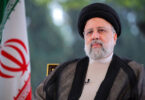Apparently as a rare show of realism PML-N law makers including Ahsan Iqbal, Rana Tanvir and Rana Sanaullah submitted a constitutional bill in the National assembly for the creation of “Bahawalpur and South Punjab” provinces. It may be recalled that it was Rana Sanaullah who in the capacity of Law Minister of Punjab had moved two separate resolutions for the creation of these provinces in the Provincial Assembly on 9tn May, 2012 which were then passed.
The leadership of two mainstream political parties PPP and PML-N did not show seriousness to present a constitutional amendment bill in the National Assembly. On the ticklish issue of South Punjab Province a number PML-N members of National and Punjab Assembly parted ways with party leadership before 2018 elections, formed a separate group and later joined PTI. Then on this political development eminent constitutional expert Barister Farough Naseem who is Law Minister in the present government commented in a private TV current affairs programme that both PPP and PML-N are not sincere to the creation of new provinces. He accused PPP leadership of doing only lip service to carving out South Punjab as new province because if it becomes a reality then the demand making Karachi as a separate province will gain momentum.
It is no longer a secrete that PML-N governments of Punjab neglected the socio economic uplift of South Punjab and feeling of deprivation of the people were time and again articulated by journalists and opinion makers on the mass media outlets. The available data of expenditure on development schemes in the previous provincial government reveals that Rs. 162 billion were allocated for Lahore Orange Train and the government was not willing to spend even one-fourth of this amount in the South Punjab on the projects of people welfare.
Creation of smaller provinces on administrative grounds improves the governing system, promotes national cohesion and strengthens the federation. Merging four provinces of former West Pakistan, making of one unit and giving it parity with former East Pakistan in 1956, gave leverage to the leadership Awami League to propagate and promote centripetal tendencies. After the partition of the Sub-Continent, India consisted of 13 provinces. Now it has 29 full-fledged provinces and seven Union territories with the status of provinces, including the capital Delhi. Smaller countries than Pakistan has more provinces. Afghanistan has 34 and Turkey has 81 provinces. Hopefully, this time both ruling and opposition parties will seriously and honestly address the issue of creation of more provinces and a meaningful consensus can be achieved for it.






